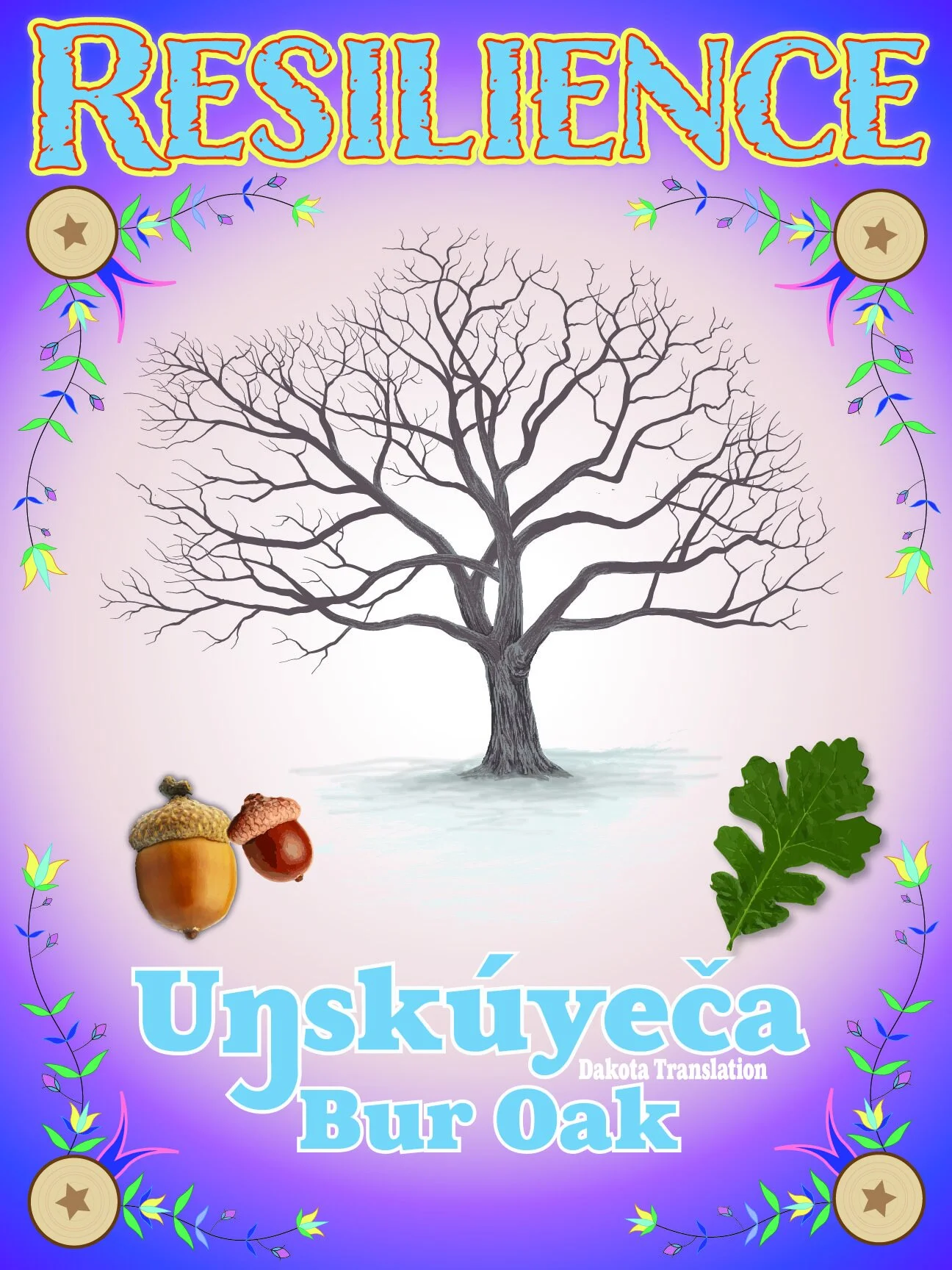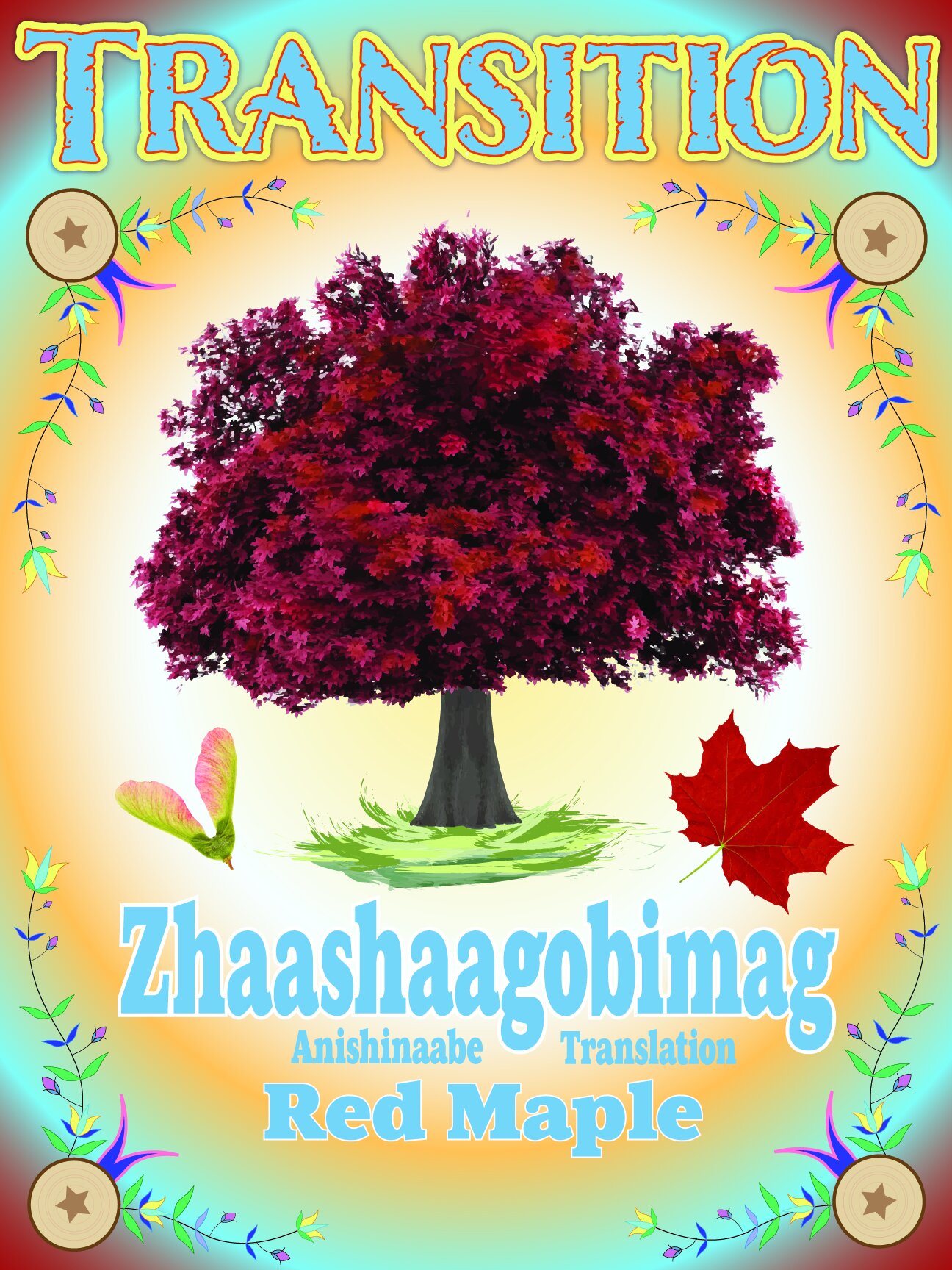
Indigenous people have studied and cared for forests along the Mississippi River in Minnesota for thousands of years, and their dedication to these places continues. With the Adaptive Silviculture for Climate Change (ASCC) research in Crosby Farm Regional Park (Crosby), scientists are following in this effort by making observations to guide stewardship in a rapidly changing world.
The future of Minnesota forests is uncertain for several reasons. Emerald ash borer (EAB), an introduced insect from Asia that feeds on the ash cambium, is expected to kill nearly all the ash trees in infected areas, taking down much of the canopy in some areas. This creates an opportunity to plant trees for greater forest diversity and resilience, but growing conditions are changing. Climate change is altering the timing of seasons and floods, and causing warmer temperatures and more severe weather. Since trees take years to grow to maturity, considering future conditions is critical to ensuring that spaces along the river hold on to the benefits of a tree canopy.
At Crosby in Saint Paul, Mississippi Park Connection joined partners to test tree species that are adapted to future climates. In 2020, more than 200 volunteers helped install 24 test plots and plant 1,200 test trees. The plots were strategically placed in gaps in the tree canopy created by EAB, and are fenced off to protect them from deer herbivory and other animals. This 20-year project is part of an international ASCC network, which aims to provide land managers with information they can use to care for forests.
Crosby is the first urban site in the network and, unlike other test sites located far from human activity, is designed to be a ‘teaching forest’ where the public can see, learn about, and participate in this research. This site has depended on the work of local community volunteers from its beginning. You can join their efforts by checking on equipment, collecting data, or joining the Crosby Crew, a group that gathers regularly to maintain the plots. Email volunteer@parkconnection.org or visit the link below to learn more about these opportunities.
Watch this video for a great introduction to the project and to see how we did it!

Signs at Crosby
In 2022, we installed signs to share the project with visitors at Crosby. The signs represent the three treatments that are being tested in the experiment: resistance, resilience, and transition (there is also a control group). The three types of plots not only contain different tree species, but also different approaches to managing forest structure. The number of large trees, for example, influences the amount of sunlight available to seedlings and understory plants.
Willard Malebear, a local Indigenous artist, created the artwork. His work illustrates Dakota florals and three of the 14 tree species that are growing in the research plots that are significant in Dakota and Ojibwe cultures. The interpretive messages were developed in partnership with Wakan Tipi Awanyankapi (formerly known as Lower Phalen Creek Project), a Dakota-led organization based on the east side of Saint Paul.
Resistance Plots:
Consist of trees that currently grow in forested areas along the Upper Mississippi River but may be underrepresented due to challenges in regeneration. The strategy behind this treatment is to maintain the forest's current condition by encouraging these species to regenerate, either naturally or by planting. This includes maintaining large cottonwood and silver maple for wildlife habitat and closed canopy conditions.
Resistance Trees:
Silver maple (Acer saccharinum)
American elm (Ulmus americana)
Eastern cottonwood (Populus deltoides)
Hackberry (Celtis occidentalis)
River birch (Betula nigra)
Swamp white oak (Quercus bicolor)
Resilience Plots:
Contain a greater variety of species native to the Mississippi River that are more flood and drought-tolerant, and may be better adapted to future climate conditions. The underlying strategy is to help the forest withstand potential changes in flooding regime and hydrological changes due to climate change, but encourage an eventual return to its original state.
Resilience Trees:
Silver maple (Acer saccharinum)
American elm (Ulmus americana)
Eastern cottonwood (Populus deltoides)
Black willow (Salix nigra)
River birch (Betula nigra)
Bur oak (Quercus macrocarpa)
American sycamore (Platanus occidentalis)
Swamp white oak (Quercus bicolor)
Transition Plots:
Contain trees that grow further south along the Mississippi River and southern genotypes of current species. This strategy aims to equip the forest for change by promoting species that are adapted to projected future climates.
Transition Trees:
Silver maple (Acer saccharinum)
Red maple (Acer rubrum)
American sycamore (Platanus occidentalis)
River birch (Betula nigra)
Sweetgum (Liquidambar styraciflua)
Southern pin oak (Quercus palustris)
Northern pecan (Carya illinoensis)
Yellow poplar (Liriodendron tulipifera)
Where do the new tree species come from?
(If map doesn’t load properly refresh the page or click here.)
The U.S Department of Agriculture (USDA) plant hardiness zones help gardeners, farmers, and foresters decide which plants will grow best in their regions. The map is based on the average annual extreme minimum winter temperature. However, plants' ideal ranges are shifting due to climate change.
Click the orange slider button on the map above and move the slider from left to right to see how these zones are expected to change in 2040-2069, compared to their distribution in 1980-2009. This map uses a medium climate scenario that predicts greenhouse gas emissions will increase into the middle of the century, when climate policies theoretically eventually cause them to decline.
When the project started, the Twin Cities was classified as Zone 4. Resistance trees came from Zone 4 (light blue), resilience trees from 4 and 5 (light blue and blue green), and transition trees from 5 and 6 (blue green and darker green). As of 2023, the current plant hardiness zone for the Twin Cities is Zone 5.
Frequently ASCC’d Questions
-
Minnesota's climate is projected to become warmer and wetter with more extreme weather events. Fewer days below freezing will mean more habitat for insects and diseases that infect trees. A greater number of hot days will affect moisture levels in soil while more extreme storms may lead to longer floods. Trees that grow in floodplain forests, such as eastern cottonwoods, are adapted to withstand seasonal flooding, but changes in flood timing and length may hinder the establishment of new seedlings.
Such impacts are predicted to negatively impact some tree species in our area, including black willow, eastern cottonwood, and silver maple. Other species, such as hackberry, American elm, bur oak, and swamp white oak, may see an increase in habitat that matches their needs.
-
Silviculture is known as "the art and science" of maintaining forests for a variety of needs and values, for example, planting trees and shrubs to provide wildlife habitat and protect the river from erosion. Adaptive silviculture means attempting to prepare for and respond to the impacts of climate change on forests. At a given site, is it more effective to put energy into bolstering forest species' abilities to persist through change, facilitating changes that may help the ecosystem adapt, or some strategy in between? The Adaptive Silviculture for Climate Change network is testing these approaches to help inform forest management across the country.
-
Floodplain forests are forests that reside in areas prone to flooding, typically along rivers and near other bodies of water. They provide a number of benefits to those who live near them. They act as water filters, by slowing the movement of water across soil that would otherwise be swept into the river as sediment. They take up carbon dioxide and other pollutants from the air. Forests along the river support a large mix of animals, including insects, birds, reptiles, and mammals. As the Twin Cities area sees an increasing number of days above 100 degrees Fahrenheit, urban forests are critical to people's health and wellbeing. Finally, these places are unique, interesting, and fun to explore!
Understanding how to best support floodplain forests through challenges like warming temperatures, insect outbreaks, and extreme weather will allow us to continue to enjoy them for decades to come.
-
In 2019, a group of collaborators met to discuss plans for this project, including which tree species to test. The partners chose trees from hardiness zones 4,5, and 6 according to their chances of survival, their ecological relationships, and social preferences. Each of the tree species in the study has some flood tolerance and most are found growing in lowland and riparian areas.
Another factor that came up was whether certain species from southern areas were already growing in the Twin Cities as street trees. To maintain the appearance of Crosby Farm Regional Park that visitors are used to seeing, the project partners selected only deciduous trees. They also considered whether southern-adapted tree species would have associations with fungi that would be necessary to their survival or characteristics that would cause them to outcompete other plants growing in the forest.
-
At the beginning and end of each growing season, researchers collect data on the survival and growth of each tree in the experiment. They are also studying the vegetation that is growing in the plots, including control plots, which are fenced-in areas of the same size as the other plots where no trees were planted. Soil moisture and temperature readers that are installed on-site are providing insight into the climate conditions in the plots. Volunteers and the research team are tracking the phenology of a subset of the trees in the experiment, or the timing of annual life cycle events, like buds leafing out or leaves changing color. This information will help us understand how the trees are relating to the timing of seasons, which is shifting due to climate change.
As the study continues over the next several years, other collaborators may sign on to ask other questions, about insects or soil microbes, for example. One place to watch for research updates is the ASCC network's "News" page.
-
In the long-term, we hope to learn which treatments best meet the management goals for this floodplain forest ecosystem. We hope to provide information that land managers can use to adapt their techniques as climate change creates new pressures in forest ecosystems like those in Crosby Farm Regional Park. At the end of the study's third growing season in 2022, we hope to have preliminary data about which trees are establishing and what other vegetation is most prevalent in the gaps left by felled, infected ash trees.
As the first urban site in the ASCC network, this experiment has also been an opportunity to engage community members around climate adaptation and forest science. The public is invited to participate in this work through education and volunteering opportunities.
-
Become a member: Like all our work, this effort to learn how to better steward floodplain forests in a changing climate is made possible in part by our financial supporters. Learn how to become a sustaining member of Mississippi Park Connection or make a one-time donation to support this important climate change work.
Volunteer: There are a number of ways to give your time to this project by collecting data and maintaining the research plots. You can learn about available opportunities on our volunteer page or email our volunteer coordinator at volunteer@parkconnection.org for more information.

Project Partners
Adaptive Silviculture for Climate Change Network
Minnesota Department of Forest Resources
U.S Department of Agriculture Forest Service
National Park Service - Mississippi National River and Recreation Area
Mississippi Park Connection
Wakan Tipi Awanyankapi (formerly known as Lower Phalen Creek Project)
City of Saint Paul / Saint Paul Natural Resources / Saint Paul Parks and Recreation
Northern Institute of Applied Climate Science
Colorado State University Forest and Rangeland Stewardship
National Science Foundation Long Term Ecological Research Network
The Adaptive Silviculture for Climate Change project in Crosby Farm Regional Park is a result of collaboration between many organizations and was made possible by the Wildlife Conservation Society through its Climate Adaptation Fund, which is supported by a grant from the Doris Duke Charitable foundation.




